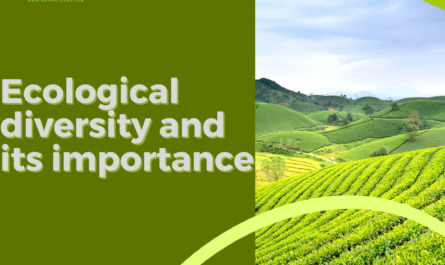1. Introduction to Microplastics:
Microplastics, smaller than five millimetres, known as microplastics, have become a major environmental hazard on a global scale.
These particles, which are a major hazard to human health and ecosystems, are produced either as microbeads in personal care products or from the disintegration of bigger plastic goods.
This introduction explores the origins, frequency, and importance of comprehending the chemical makeup of microplastics in order to lay the groundwork for a thorough investigation of their effects and possible remedies.
2.Chemical Composition of Microplastics:
Their permanence and influence on the environment are largely determined by their chemical makeup.
Main Polymer Building Blocks:
Polyethylene (PE):
The most prevalent kind, making up between 60 and 80 percent of microplastics. Plastic bags, packing films, and apparel all contain PE.
Polypropylene (PP):
Constitutes 10–20% of microplastics. Carpets, fabrics, and bottle caps all contain PP.
Polystyrene (PS):
Contains between 5 and 10% microplastics. Food packaging, throwaway cups, and insulation all employ PS.
Polyethylene terephthalate (PET):
5 percent or so of microplastics. PET is utilised in food containers, garment fibres, and beverage bottles.
3. Environmental Distribution of Microplastics:
The environment is full of microplastics; they can be found in rivers, soil, air, and oceans.
They are the end product of industrial operations, microbeads, and the disintegration of larger plastic products.
Oceans and other aquatic environments suffer greatly, which has an effect on marine life.
Furthermore, the detection of microplastics in terrestrial settings and even the atmosphere highlights the extensive diffusion of these particles in the environment.
Factors Influencing Distribution:
Sources:
Microplastics from synthetic clothing and cosmetics also contribute, although land-based sources such as textiles, tyre wear and plastic garbage predominate.
Ocean currents:
Large areas of the water are caught and concentrated with microplastics by gyres like the North Pacific Subtropical Gyre.
Wind patterns:
Airborne microplastics can travel long distances, influenced by global wind systems.
IV. Sedimentation:
Greater density microplastics sink to the ocean floor, whereas buoyant microplastic stay
suspended in water columns.
4. Analytical Techniques for Microplastic Detection:
Promising strategies include spectroscopic and thermo-analytical methods. The two vibrational spectroscopic methods
Fourier-transform infrared spectroscopy (FT-IR)
Raman spectroscopy
have been implemented for MP detection.
4.1. Fourier-transform infrared spectroscopy (FT-IR):
Although microplastics cannot be immediately removed, Fourier-transform infrared spectroscopy (FT-IR) is an important tool for identifying, quantifying, and characterising them—all of which are critical steps in combating this ubiquitous pollution.
Consider it as a high-tech investigator, exposing the mysteries concealed in these minuscule pieces of plastic.
4.2. Raman spectroscopy:
Raman spectroscopy adds to the arsenal of effective weapons in the fight against microplastics by providing a different kind of light than FT-IR on these minuscule invaders.
Consider it as an additional detective that provides special information on microplastics to help with their detection, description, and eventually elimination.
Different thermo-analytical methods, including differential scanning calorimetry (DSC), pyrolysis (Py), and thermogravimetric analysis (TGA), have been modified for MP detection in recent years.
The foundation of all thermo-analytical techniques is the measurement of the polymer’s physical or chemical changes during heat treatment.
While TGA-MS is predicated on the identification of certain thermal breakdown products, DSC detects variations in heat flux brought on by polymer phase transitions.
The amount of analytical data gathered, together with the methodologies’ complexity and effort, all rise by
TGA-DSC < TGA-MS < Py-GC-MS/TED-GC-MS.
5.Human Health Implications:
Numerous in vitro and in vivo investigations have demonstrated that micro- and nanoplastics can have detrimental effects on the human body, including oxidative stress, inflammation, necrosis, apoptosis, and immunological responses.
5.1. Inflammation:
In vitro research employing different sized polystyrene particles revealed that the human A549 lung cells were affected by inflammation when exposed to larger particles (202 nm and 535 nm).
5.2. Oxidative Stress and Apoptosis:
Numerous in vitro investigations have demonstrated that certain polystyrene nanoparticles can, in a cell context-dependent manner, trigger oxidative stress, apoptosis, and autophagic cell death.
For example, it has been demonstrated that amine-modified polystyrene nanoparticles strongly bind and aggregate with mucin, causing intestinal epithelial cells that secrete mucin and those that do not to undergo apoptosis.
5.4. Metabolic Homeostasis:
Recent research has shown that microplastics and nanoplastics can affect cellular metabolism in both in vitro and in vivo models, in addition to inducing inflammation and apoptosis.
6. Ecological Threats and Impact on Wildlife:
The presence of microplastics disturbs natural processes and puts many species in peril, ranging from the greatest mammals to the tiniest plankton.
Let’s examine the ecological risks and effects on fauna.
6.1. Mistaken Identity:
Because microplastics typically mimic prey, a variety of creatures, including fish, birds, and even mammals, may unintentionally consume them. These organisms include zooplankton filter feeders.
This may result in internal injuries, obstructions in the digestive systems, and decreased feeding efficiency, all of which may have an adverse effect on survival, growth, and reproduction.
6.2. Endocrine Disruption:
Certain microplastics comprise additives that have the potential to function as endocrine disruptors, thereby disrupting hormonal equilibrium and impacting the growth, development, and reproduction of species across the food chain.
6.3. Toxic Soup:
Hazardous chemicals from the environment, such as PCBs and PAHs, are easily absorbed by microplastics.
These contaminants concentrate in predators as they go up the food chain through consumption, endangering their health and possibly harming humans if ingested.
7.Mitigation and Remediation Strategies:
Bioremediation, membrane bioreactor (MBR), electrocoagulation, sol-gel technique, flotation, enhanced filtering, and AOPs are evaluated for microplastic removal.
7.1. Bioremediation:
One method that shows promise for addressing the growing issue of microplastic pollution is bioremediation.
It uses the ability of microorganisms, such as fungi and bacteria, to decompose and destroy these little plastic particles.
7.2. Membrane Bioreactor (MBR):
Membrane bioreactors (MBRs) are becoming a viable wastewater treatment method to address microplastic pollution.
They offer multiple advantages for the removal of microplastics by combining the benefits of membrane filtration with traditional activated sludge techniques.
7.3. Electrocoagulation:
Since electrocoagulation (EC) is simple, effective, and has the potential to be scaled up, it is becoming a more attractive alternative for removing microplastic from water.
7.4. Sol-gel technique:
When it comes to combating microplastics, the sol-gel method is starting to show promise.
It functions by ensnaring them in a network of gel created by chemical processes.
As a result, microplastics become immobile and agglomerate, which facilitates their removal from water.
Principal advantages:
Broad spectrum of microplastics
Adjustable characteristics for the best possible capture
Restricted distribution and the possibility of resource restoration
Ecologically favourable
7.5. Flotation:
Environmental concerns are developing due to microplastics, those microscopic plastic warriors that are finding their way into our waterways.
But do not be alarmed—the buoyant forces of flotation are up to the task!
This straightforward yet efficient method separates the more buoyant materials from the denser water and its undesirable plastic passengers by taking use of the materials’ innate tendency to float.
7.6. Enhanced filtering:
The tiny plastic threats known as microplastics have found their way into our rivers and are becoming a bigger concern to ecosystems and maybe even to human health.
But have no fear—enhanced filtration technologies, the protectors of pure water, are up to the task!
By using these creative techniques, a more precise net is being woven to catch these undetectable plastic particles.
Increasing Your Filtration Game Level:
The tiny size of microplastics may be too much for conventional filters to handle.
7.7. AOPs:
Advanced oxidation processes, or AOPs, are becoming more and more effective weapons in the battle against pollution from microplastics.
These devices make use of hydroxyl radicals, which are strong oxidizers that can disintegrate and decompose organic pollutants, such as those bothersome plastic pieces.
Think of them as little Pac-Mans, consuming microplastics at the molecular level!
Plastics can be converted into hydrocarbons or nanocarbons with additional value through physical or catalytic thermal treatment.
These transformation tools show a lot of promise for managing MPs.
For the effective recovery of plastic trash, biodegradation of polymers and low-cost recycling processes are being used.
8.Conclusion and Future Prospects:
A new type of pollution that is affecting both marine and land areas is microplastic. The living systems may become extremely poisonous as a result of this. It emits harmful substances that have the potential to spread into polluted areas when it migrates. We must use less plastic waste in our daily lives and consider recycling it for the environment because it is so prevalent. The management and recycling of plastic trash are critical processes.
References:
G Dierkes, T Lauschke, C Földi
Plastics in the Aquatic Environment-Part l: Current Status and Challenges, 43-67,2021
Jaona C.Prata, João P.da Costa, Isabel Lopes, Anthony L. Andray, Armando C. Duarte, Teresa Rocha-Santos
Science if the Total Environment 777, 146094, 2021
Pankaj Bhatti, Vinay Mohan Pathak, Ahmad Reza Begheri, Muhammad Bilal
Environmental Research 200, 111762, 2021
Kunsheng Hu a, Wenjie Tian a, Yangyang Yang a, Gang Nie b, Peng Zhou c, Yuxian Wang d, Xiaoguang Duan a, Shaobin Wang a
Water Research 198, 117144, 2021
Shams Forruque Ahmed a, Nafisa Islam a, Nuzaba Tasannum a, Aanushka Mehjabin f, Adiba Momtahin a, Ashfaque Ahmed Chowdhury b c, Fares Almomani d, M. Mofijur e
Chemosphere 347, 140648, 2024
Nafiaah Naqash, Shaista Manzoor, Rahul Singh
International Journal of Environmental Technology and Management 26 (3-5), 153-172, 2023

